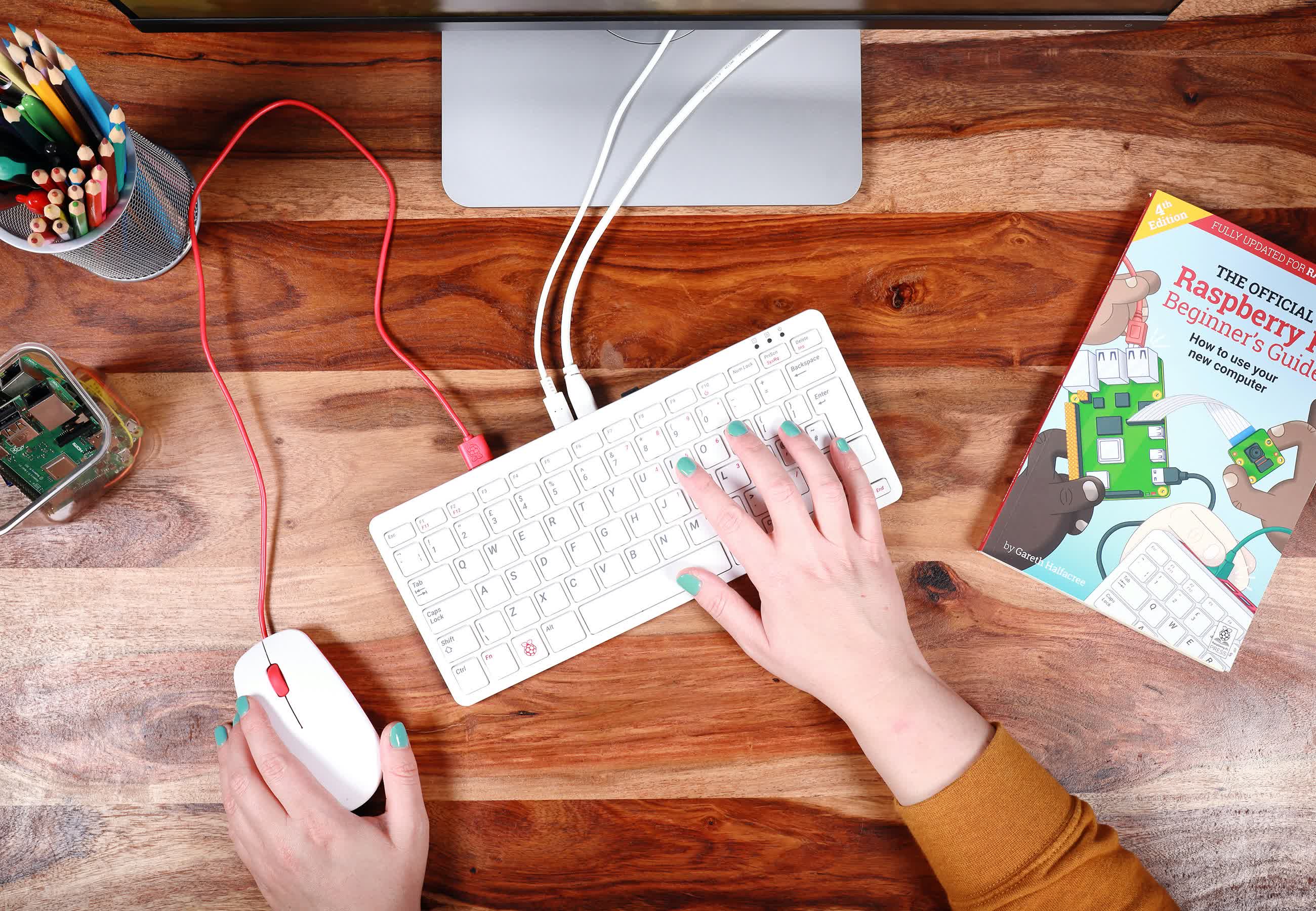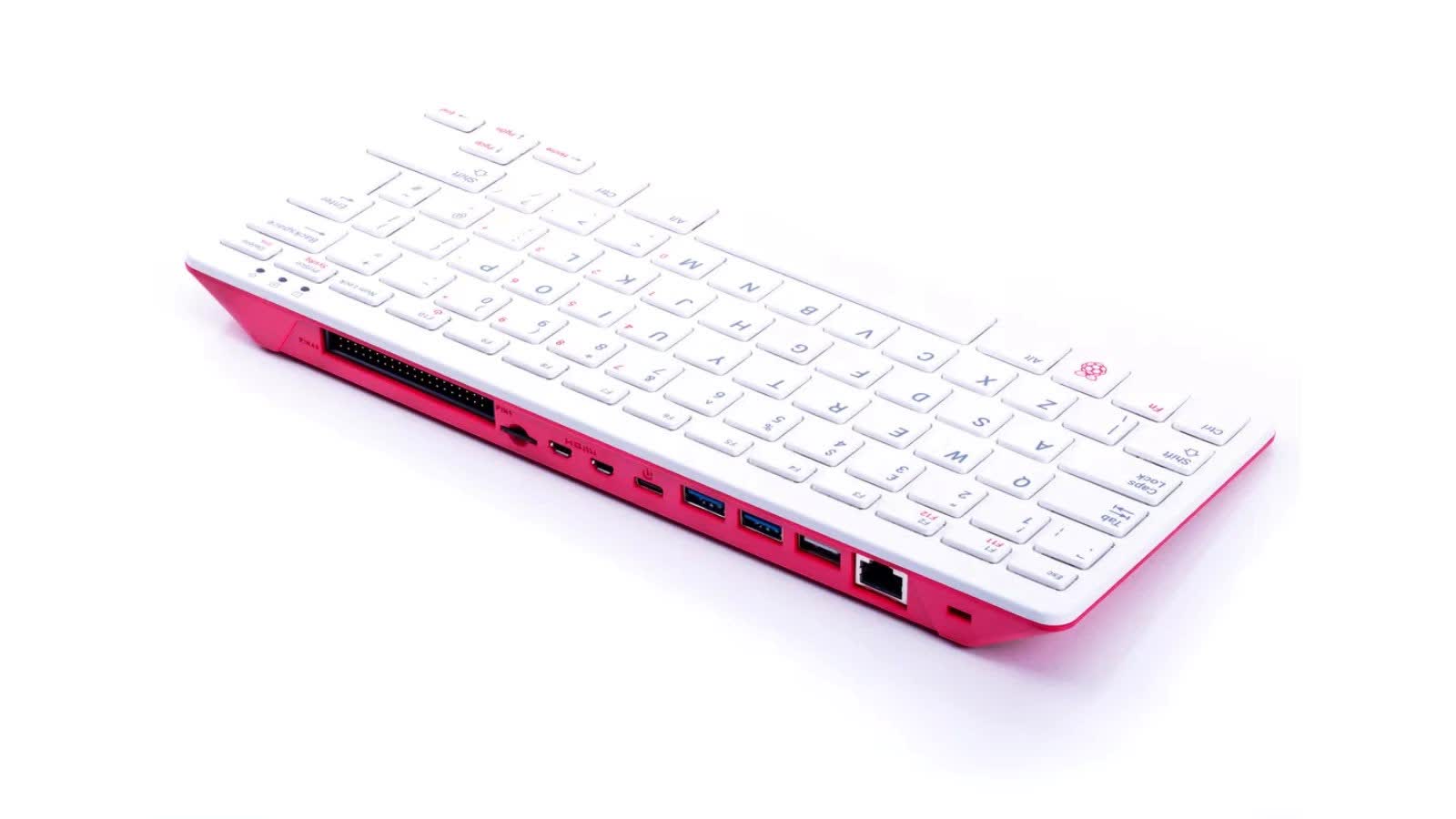In context: The low-cost Raspberry Pi computer is a revered piece of hardware among DIY enthusiasts who’ll find the new Raspberry Pi 400 a much more accessible, user-friendly way to get tinkering with projects. Based on the Raspberry Pi 4, this new variant features slightly higher clock speeds and is packed inside a compact keyboard with all I/O located on the front.

With the Raspberry Pi 400, the Raspberry Pi foundation wants to make computers more approachable for children and for those looking to start (or further) their coding career. Its chiclet keyboard houses the same Broadcom BCM2711 chip found in the Raspberry Pi 4 but has four ARM Cortex-A72 cores running at 1.8GHz, up from 1.5GHz.
This could also lead to higher temperatures, something which has already been a concern on the regular Raspberry Pi 4. However, according to the Raspberry Pi foundation, the Pi 400 should stay cool and silent as it comes with especially designed thermals.

It’s got plenty of connectivity, as expected, including dual-band 802.11ac Wi-Fi and Bluetooth 5.0. The entire back of the keyboard is occupied with ports consisting of Gigabit Ethernet, 2 x USB 3.0, 1 x USB 2.0, 2 x micro HDMI, microSD storage, and a 40-pin GPIO header. There’s also a USB-C port but that’s reserved for 5V DC power only.
Unlike the Raspberry Pi 4 which received an 8GB variant this year, the Raspberry Pi 400 only comes with 4GB of RAM. It is, however, $5 cheaper and has the added cost, space, and functional advantage of being a keyboard as well.
It’s also available as part of the $100 personal computer kit that bundles it with a mouse, power supply, micro HDMI to HDMI cable, an SD card preloaded with Raspberry Pi OS, and an official Beginner’s Guide.
https://www.techspot.com/news/87396-raspberry-pi-400-puts-diy-computing-right-under.html